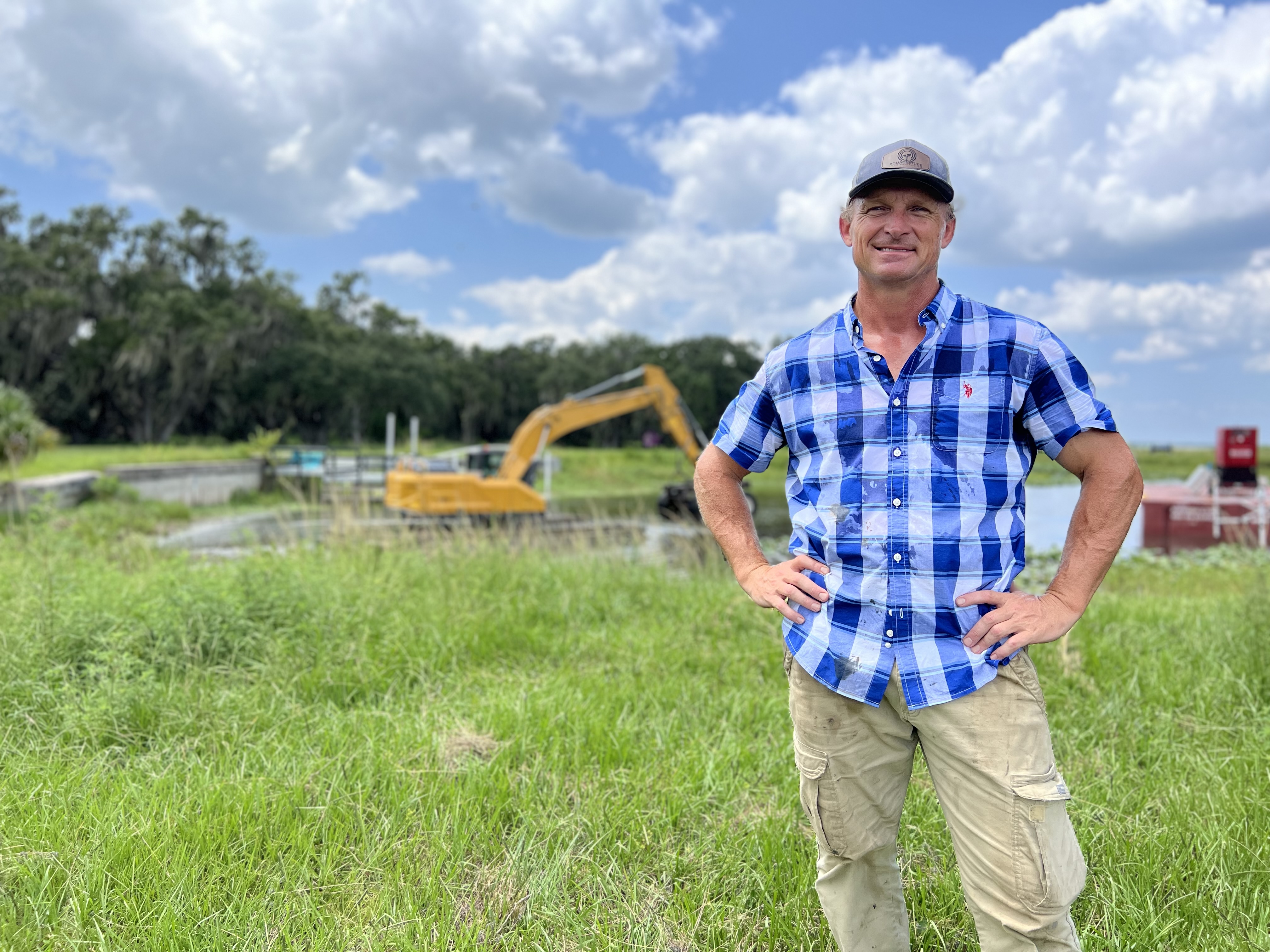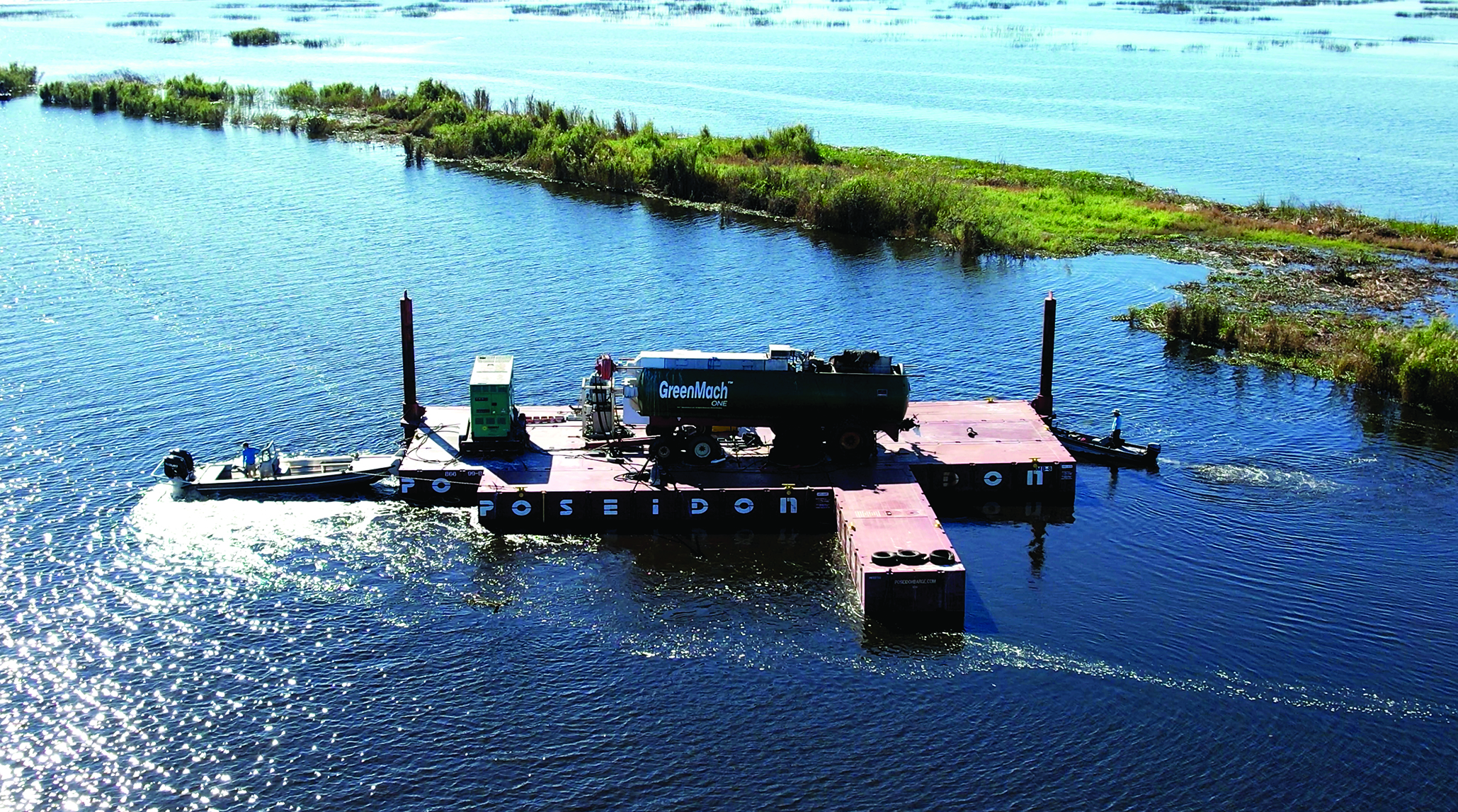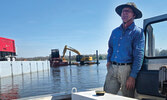By Mel Luymes (Photos courtesy of AguaCulture -Click here to see the video ! )
Maybe you haven’t heard of Nick Szabo yet, but many of you would have. He was born and raised on a hog farm near Kirkton and was a manure contractor that liked to think big. Always a step ahead, in 1998, he was featured in the Ontario Farmer for a 200 HP army vehicle he converted to haul manure, and later in Manure Manager magazine. He designed a way to load manure tankers in mere seconds with a dumping system that eliminated foam. Turns out that would just be the beginning of an exceptional career doing good, honest, dirty work.
Nick fires up the boat on Lake Istokpoga and talks excitedly about what he’s been up to and how he got to where he is today. Awarded an Exceptional Abilities Visa to the U.S. in 2021, he has no plans to come back to Canada. He plays up a Florida accent with a smile before going back to a more natural Ontarian inflection.
He takes us through a maze of water hyacinth, hydrilla, torpedograss, and spatterdock on the lake and out to his workstation: two barges with pumps, a hard hose and reel, and a floating excavator.

It is quite the story to understand how Nick got here. When the dollar went par in 2007, Nick and his wife went state-side and he started manure contracting for some of the biggest farms across the Midwest of the U.S. He’s always liked to do things BIG, and thanks his rural Ontario roots for a “can do” attitude, where he learned he could fix up just about anything.
Even as a younger version of himself, Nick had thought outside the box. He had long been toying with the idea of growing water plants on manure lagoons or nutrient-rich waters and harvesting those plants to keep nutrients cycling in the loop.
When he came to Florida, nature was way ahead of him; aquatic vegetation covered its nutrient-rich lakes.
The Florida Peninsula, like our Bruce Peninsula, is made of karst limestone bedrock covered in sand ridges and peat wetlands, with a very high water table. It is covered with interconnected lakes and gets 50-60 inches of rain a year. The Peninsula produces oranges, grapefruits and other citrus fruits, tomatoes, peppers, strawberries, sugarcane and watermelon. It is also home to 23 million people and hosts an additional 143 million tourists each year. And let’s not forget the 886,000 head of beef cattle on pasture and the 15,000 cow-calf operations that ship 450,000 calves each year to other states.
Florida also has one of the largest deposits of phosphate in the world; millions of years ago, it was covered in a warm shallow sea and the accumulation of bones and marine organisms there would eventually become over half a million acres of phosphate mines, shipping fertilizer around the world.
The key to understanding phosphorus is knowing that it doesn’t go away. Ever. It is locked in a living cycle of growth and decay, consumption and excretion.
Needless to say, the sensitive and interconnected freshwater lakes in Florida have long been eutrophic; that is to say, they have excess nutrients in them. Lake Okeechobee is 451,000 acres and one of the largest lakes in the U.S. While it historically flooded south across the Everglades, it has now been surrounded by an earthen dam that protects the downstream peat areas for sugar cane production. It now outlets instead through canals to both coasts and its phosphorus-rich waters are contributing to “red tide” algal blooms around Florida’s coasts.
Excess nutrients lead to overgrowth of plants and algae in both fresh and saltwater ecosystems. While harvesting the plants in freshwater lakes has been done in the past, the Florida government felt it was too expensive and instead preferred to spray the lake with a diquat herbicide in order to kill the vegetation and keep the lakes looking clean.
However, when these plants die, they sink to the bottom and create a thick sludge of nutrients that only further degrade the ecosystem and water quality. Nick says that when he tests samples of this sludge, it comes back with the same results as finishing hog manure. And it is at least a foot thick across the bottom of the 3-9-foot-deep Lake Istokpoga, which is over 23,000 acres, and the fifth largest in Florida.
But Nick had an idea to improve the logistics of traditional vegetation harvesting and put the nutrients back on the land. He’s all about finding the win-win-wins, for the environment, for anglers, for agriculture and for the tax-paying public.
There was plenty of opposition, but Nick persevered. He is now showing Florida what a savvy manure contractor from Ontario can do.
He runs two floating harvesters in the lake, and they pick up the vegetation with an aluminum scooper, cutting across the vegetated lake on paddlewheels. Instead of bringing the vegetation back to shore as these types of harvesters would traditionally do, they bring it to the nearby barge processing station, where it goes through a processor that is running on a 130 HP generator.

Nick refers to his patented GreenMach One processer as a “huge juicer.” It macerates the vegetation into a thick slurry, then goes to a 100 HP pump, and through the hard hose to the shore. From there, it just keeps going and going, up to 20 miles away through hoses and booster pumps to be land applied on hay fields or pastures. Growing on sandy soils, these pastures are low in nutrients and the natural fertilizer greens them up, improves the cattle and can even grow hay for export. The green material builds the organic matter in the soil, increasing the water holding capacity and kick-starting a virtuous cycle of soil health.
But chopping “water silage” isn’t all that Nick and his AguaCulture team are doing. These days, he is using a similar process of land application but with the sludge from the bottom of the lake. With basically a glorified pool vacuum, the barge slowly creeps across the lake and the vacuum pulls in the gravy-like sediment without disturbing the sand bottom. It isn’t dredging, it is much less invasive. This is part of a 10-year contract to clean up Lake Istokpoga.
Nick has been going through hoops, running proof-of-concept projects to demonstrate that he can remove phosphorus from a lakebed for U.S.$150 per pound, which is less than half of alternative technologies. But he has come up against politicians and environmentalists alike that don’t understand the importance of phosphorus and nutrients going back to the land. Perhaps because agriculture has been blamed for nutrient pollution for so long, they can’t see that agriculture is the most critical part of the solution.
In any case, the hardship hasn’t stopped Nick Szabo. He continues to move forward, step by step, handling both the dirty jobs and politics with a determined optimism.
Author's note: When I first reached out to Nick for a tour while I was visiting my parents in Florida in February, I told him that my parents used to be manure contractors. He replied that anyone who handles manure for a living is a good person. And I think, from my experience, that he just might be right. ◊


